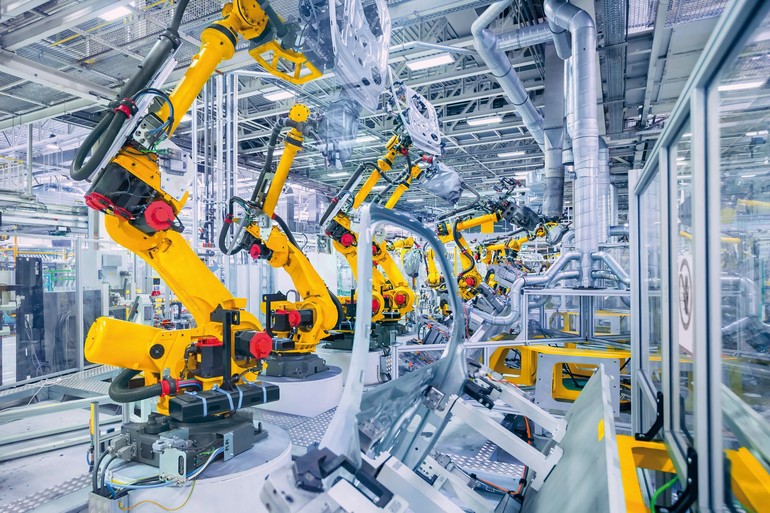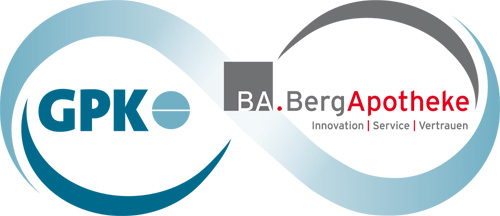NIOSH Science Blog
A robot may not injure a worker: working safely with robots
Robots are used in increasing numbers in the workplace and in society in general. As their numbers and capabilities increase, observers have urged that scientists, engineers, and policymakers explore the implications of robotics for society, to ensure that the rise of robots will not spell doom for humanity as some critics have warned [1]. To avoid this scenario, in 1942 Isaac Asimov set out three laws of robotics in his short story Runaround. The first law of robotics centered on the safety of people states: A robot may not injure a human being or, through inaction, allow a human being to come to harm. How well has this law been applied to worker safety as robots take on more tasks in the 21st century workplace and become robot workers? Judging from continuing headlines about workers injured or killed by robots, not sufficiently.
Most recently, a German newspaper (Hessische/Niedersächsische Allgemeine, HNA) reported that a worker, an employee of a third-party contractor, was killed while installing an industrial robot at a Volkswagen assembly line on June 30, 2015 in Baunatal, Germany [2]. The robot gripped and pressed him up against a metal plate, crushing his chest. Despite efforts to revive him, the worker later died at a hospital [3]. It is unclear whether this fatality was caused by engineering error or human error. This case and others of workplace incidents involving industrial robots suggest that additional safety measures for worker interactions with industrial robots are necessary.
Our recently published paper describes the increasing complexity of robots and proposes a number of recommendations for protecting workers interacting with robotic workers [4]. The paper identifies three categories of robots: (1) industrial robots; (2) professional and personal service robots; and (3) collaborative robots. The initial wave of industrial robots were introduced in the 1970s when they began to be used in the manufacturing sector for assembling automobiles. The second robot wave took off at the turn of the 21st century with the introduction of service robots. It was facilitated by the increasing autonomy and sensory capabilities of robots coupled with decreasing cost and size of microprocessor controllers. With the availability of relatively inexpensive collaborative robots capable of working in direct contact with people, we are now entering the third robot wave where robotic workers operate alongside human workers and symbiotic workers, i.e., human workers equipped with performance-enhancing robotic devices such as robotic exoskeletons and other capacity-enhancing prostheses.
The International Organization for Standardization (ISO) defines industrial robot as an automatically controlled, reprogrammable, multipurpose manipulator, programmable in three or more axes, which can be either fixed in place or mobile for use in industrial automation applications [5]. Industrial robots are characterized by high strength, endurance and precision and are widely used for welding, painting, assembling, moving, and testing. Most of industrial robots are unaware of their surroundings, therefore, they can be dangerous to people. The main approach to the industrial robot safety is maintenance of a safe distance between human workers and operating robots through the creation of guarded areas. A number of guidance documents and international standards deal with workplace safety around industrial robots. However, continuing incidents resulting in harm and death to workers indicate that additional measures such as additional redundancies in safety measures, additional training and improvements in overall safety culture are necessary.
Service robots perform useful tasks for humans which exclude industrial automation applications. Service robots used for commercial tasks and operated by a properly trained operator are called professional service robots, while service robots used for non-commercial tasks are called personal service robots (e.g. robotic vacuum cleaners). Unlike industrial robots, service robots operate mostly outside industrial settings in unstructured and highly unpredictable environments without people such as disaster areas or with people present such as hospitals and homes. Physical proximity between professional service robots and human workers are much more common than between industrial robots and workers since they often share the same workspace. Therefore, worker isolation from the professional service robot is no longer an option as the main safety approach. Furthermore, more complex environments in which service robots must operate dictate much higher degree of autonomy and mobility afforded to service robots. This autonomous and mobile behavior can result in dangerous situations for workers. Therefore robot designers must consider physical, social and ethical implications of such autonomy. In addition to engineering and human sources of injuries, adverse environmental factors such as extreme temperature, poor sensing in difficult weather or lightning conditions can lead to incorrect response by service robots and can be a source of injury [6]. Yet, despite the proliferation of safety concerns involving service robot workers in the same workplace as human workers, no international standards have been developed to address human worker safety in maintaining or operating professional and personal service robots.
Collaborative robots defined as a robot designed for direct interaction with a human [5] could be any of the three types of robots described previously, industrial, professional, or personal service robot. Collaborative robots combine the dexterity, flexibility and problem-solving skills of human workers with the strength, endurance and precision of a mechanical robots. A new field of collaborative robotics is managerial robotics. Instead of being relegated to mundane, repetitive, and precise job tasks, robots with their perfect memories, internet connectivity and high-powered computers for data analysis could be successful in particular management roles [7]. Since robots are working alongside human workers, isolation as a safety measure is no longer an option, and other safety approaches must be developed and implemented (e.g., proximity sensors, appropriate materials, software tools, and similar controls) [6].
The on-going introduction of advanced industrial, professional service and collaborative robots working alongside of human workers requires occupational safety and health professionals to take a proactive approach to the assessment and management of the risk profile of occupational robotics. To ensure that human workers are protected, in our article [4] we recommended the following measures for occupational robotics: (1) occupational safety and health professionals should be directly involved in the development of international standards aimed at ensuring safety of workplaces with human and robot workers; (2) workplace safety standards for maintenance, operation, and interaction with human workers, of professional, personal service and collaborative (including managerial) robots should be developed; (3) proactive approaches for establishing risk profiles of robotic workplaces should be developed; and (4) redundant safety measures should be developed and operationalized to protect human workers while performing maintenance tasks on robot workers. These measures, and others suggested by experts, should be examined now before millions of potentially unsafe robots enter the 21st century workplace.
References
Rawlinson, K.: Microsofts Bill Gates insists AI is a threat. BBC News. 29 January 2015. Available at http://www.bbc.com/news/31047780. Accessed on April 28, 2015.
Kühling, S.: Unglück im VW-Werk Baunatal: Roboter tötet Arbeiter. HNA, July 1, 2015. Available at www.hna.de/kassel/kreis-kassel/baunatal-ort312516/roboter-toetet-arbeiter-vw-werk-5191637.html (accessed August 5, 2015).
Brumfield, B.: Car assembly line robot kills worker in Germany. CNN, July 2 2015. Available at http://www.cnn.com/2015/07/02/europe/germany-volkswagen-robot-kills-worker/ (accessed October 28, 2015).
Murashov, V., F. Hearl., J. Howard: Working Safely with Robot Workers: Recommendations for the New Workplace. J. Occ. Env. Hyg. DOI: 10.1080/ 15459624.2015.1116700 (2015).
International Organization for Standardization (ISO): Robots and robotic devices Vocabulary (ISO 8373:2012). [Standard] Geneva, Switzerland: ISO, 2012.
Vasic, M., A. Billard: Safety Issues in Human-Robot Interactions. In 2013 IEEE Int. Conf. Robotics Automation (ICRA), Karlsruhe, Germany, May 610, 2013. New York, N.Y.: IEEE, 2013. pp. 197204.
Gladden M.E.: Managerial robotics: a model of sociality and autonomy for robots managing human beings and machine. Int. J. Contemp. Management 13(3):6776 (2014).








